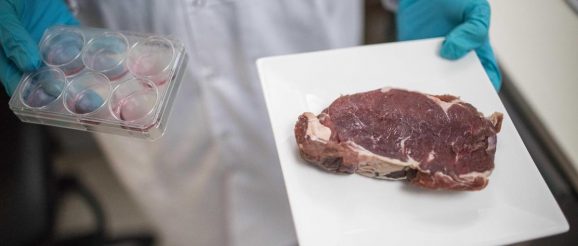China targets innovation in sustainable protein

For the first time, China’s most recent Five-Year Plan for Agriculture, published in January, includes references to cultivated meat and other synthetic proteins. Specifically, the plan refers to “cell-based meat, synthetic egg cream, functional recombinant protein cultivation” under the heading of “cutting edge and cross integrated technology” in the technology innovation section. More recently, Chinese President Xi Jinping mentioned the development of new proteins from plants and microorganisms using biotechnology in a speech at the 13th National Committee of the Chinese People’s Political Consultative Conference.
This could be a major opportunity for China to become a global market leader and help manage food system risks.
Food and nutrition security
China faces new challenges in its food and nutrition security and has become increasingly reliant on imports in recent years. In 2021, China imported more than 160 million tonnes of soybean, maize, wheat and other grains. Increased demand for animal feed was identified as one of the main drivers behind surging grain imports last year, leading to concerns in China around its high dependency on international markets. Growth in China’s cereal grain harvests has slowed in recent years, and an imperative to sustain yields has often driven unsustainable farming practices that have led to the degradation of agricultural land.
Confronting such conditions is a complex issue requiring broad strategies. The potential for plant-based and cultivated meats to address food and nutrition security is just one aspect gaining increased attention. With a shift in production away from food that requires a high volume of grain and soy for feed, the Chinese economy has an opportunity to reduce its dependence on imports, which could strengthen food sovereignty and security. The country currently relies heavily on imported soy, for example, accounting for approximately 60% of global imports.
Regarding the efficiency of food production, the economics of plant protein production is also advantageous because it avoids the feed-to-food conversion loss typical of other protein forms. For example, since pea protein requires, on average, a third of the amount of land to produce the same quantity of protein from pork, production increases could likely be met domestically while improving soil conditions through fixing nitrogen into the soil.
Moreover, as the impacts of recent swine flu outbreaks are felt at tables and in the Chinese economy, increasing alternative protein production could also contribute to supply chain resilience. But realising these possibilities requires introducing industry standards and a supportive policy framework, meaning that the Five-Year Plan is a promising start and could be a sign of more detailed policies to come.
A new homegrown industry
As a tech and innovation hub for new food technologies, China is well-positioned to become a leader in the transition to a sustainable food system. The number of start-ups in the food tech and alternative protein sector is growing rapidly, and amongst them are early pioneers working on cell-based meat products, like CellX, JIMI and Zhouzi Weilai.
Cell-based meat is produced using cutting-edge technologies such as tissue engineering, biotechnology, molecular biology and synthetic processes, whereas “fermentation” of plant-based protein involves the cultivation of microbial organisms.
Scaling alternative protein production could create export opportunities for finished products reminiscent of clean energy growth trends some years ago when rapid capacity growth saw China become the top producer of solar energy worldwide. This is a potential tech-driven export market that China could pursue as a strategic priority, particularly given its competitive advantages in technology and a high level of R&D spending.
Currently, the cost of cultivated meat far exceeds conventional animal protein sources, but the technology could reach cost parity by 2030, according to the consulting firm McKinsey. The high cost is a result of lab-scale and pilot-scale production and remaining technical challenges, but production costs have already fallen by 99% since the first prototypes were developed a decade ago. Cost-reducing innovation can be driven by domestic entrepreneurs focusing on cell-based meat production, whose number continues to grow in China. JIMI, a cell-based beef producer launched in 2021, expect that the cost of cell-based meat could be reduced to 100 yuan (around US$15) per kg within five years.
In 2021, Singapore became the first country to approve the sale of cell-based chicken. Cell-based businesses in the US and Israel could be next. In 2020, a member of the Chinese People’s Political Consultative Conference (CPPCC) indicated that China needs a national strategy for cultured meat and to improve the regulatory environment, for example, by enabling regulatory approval of novel food products. While the Five-Year Plan is a good starting point and an indication of future work, it would also need a supportive regulatory environment for the sector and to help domestic start-ups.
Finally, the 14th FYP on Agriculture recognises the need to reduce agricultural emissions and achieve carbon neutrality, and China’s announcement could motivate other countries to do the same. At COP26, China announced a commitment to reduce methane emissions across sectors, including agriculture. Producing more alternative protein products could help tackle global issues such as methane emissions and land use change and create an opportunity to restore degraded land, as over 70% of the world’s agricultural land is currently used for livestock and animal feed.
Cultivated meat has the potential to reduce the global warming and water use impacts of protein production, but its environmental footprint also depends on the kind of energy and material inputs that goes into its production. Further research is needed on other aspects of cultivated meat, such as nutrition, so continued policy focus and investment in research will remain important to encourage better understanding and innovations.
The inclusion of cultivated meat and other synthetic proteins in government planning marks a major milestone for the alternative protein sector. Safeguarding national food security and increasing self-sufficiency have always been the Chinese government’s priority. This move could signal a step towards becoming a global market leader in this emerging sector and securing China’s position as a leader in resilient food production.
